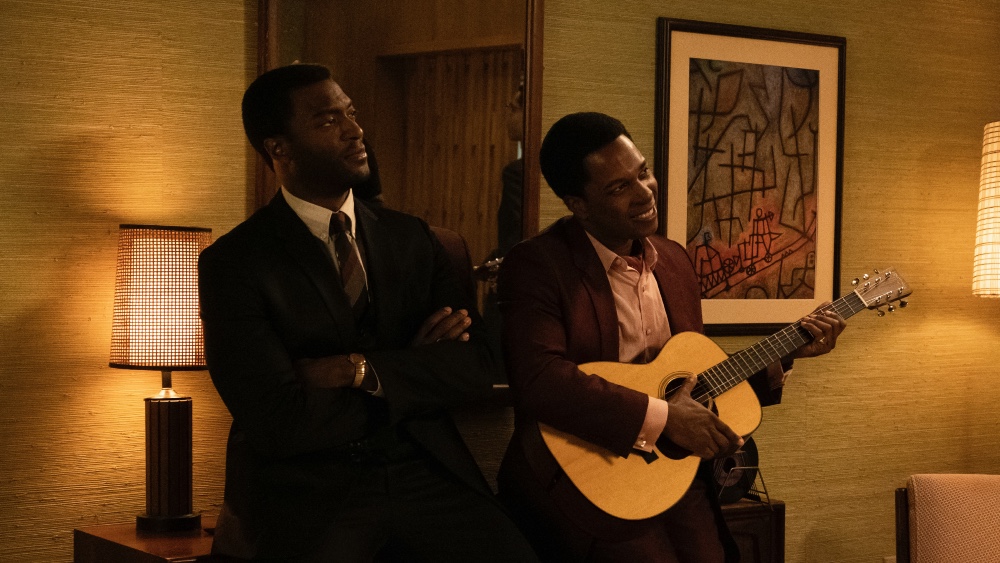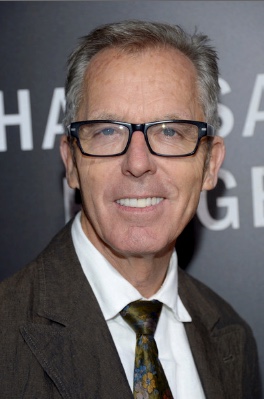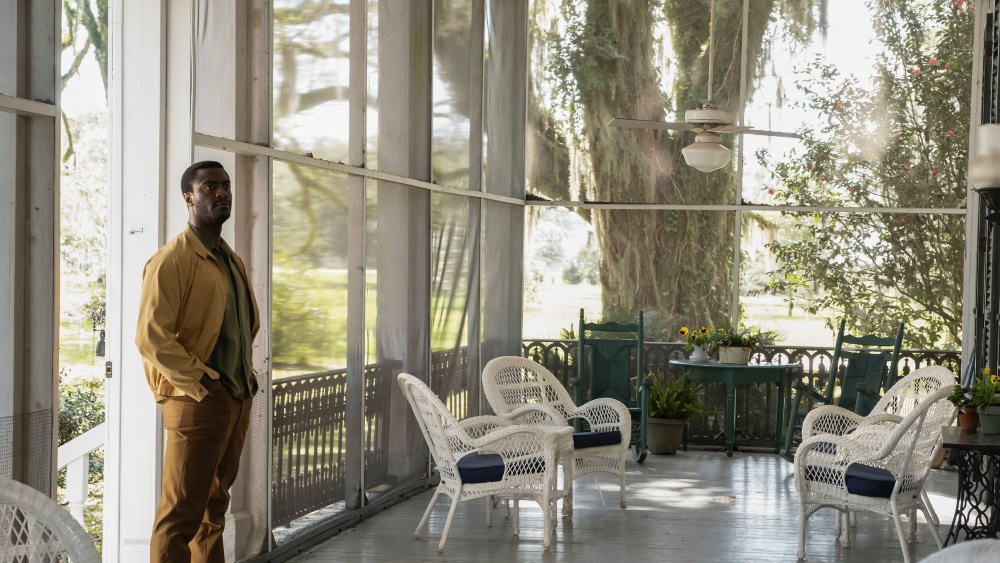
Oscar winner and now director Regina King has already garnered a Golden Globe nomination for her work on One Night in Miami…, about a fictionalized meeting between four crucial figures in American history in 1964. Set mostly in a cramped hotel room in Florida, the story features Malcolm X (Kingsley Ben-Adir), the boxer who would become known as Muhammad Ali (Eli Goree), groundbreaking NFL player Jim Brown (Aldis Hodge), and composer and singer Sam Cooke (Leslie Odom, Jr.), engaged in a difficult conversation about race in America, on the heels of Ali’s boxing title win over Sonny Liston.
However, in One Night in Miami…, like in most visually successful motion pictures, the craft is one of the characters, too. In this case, the distinction mostly belongs to Production Designer Barry Robison. Because most of the action takes place in a hotel or hotel room, Robison faced the challenge of constructing a set that was size appropriate for the team (meaning, small), but that permitted both camera and actor movement sufficient to give King’s direction some dynamism. Robison also had to construct TV sets for some of the fictional appearances by singer Sam Cooke. The end result was a unique set that seemed to almost interact with the four characters, teasing them as they moved along from space to space, and framing their heated discussions as something that was suffocating but also careful and important.
Last week, Below the Line spoke to Robison about his work in One Night in Miami…, how he came to construct such meticulous stages, and what it was like to work behind a first-time director.

Below the Line: There’s so much about the design of this film that is important—how did you even get started on this when you got involved?
Barry Robison: I got this through my agent, as I had just finished Snowpiercer [the TV show]. I read the script and I couldn’t believe it. I almost fell on the floor. It really spoke to me, and it’s in my wheelhouse because it’s so character-driven like so much of my past work. My agent got a meeting with the producers and Regina, and I came in with some ideas to which Regina responded well. The next thing I knew I was on the airplane to New Orleans.
I thought it was important, because it is a mid-century modern piece, that we take a look at mid-century African American painters and use them as a basis for the visual design language. Regina really responded to that and in fact some of the paintings were in the motel room. It set the tone for the look of the film.
BTL: How did you start thinking about designing the hotel sets?
Robison: A lot of research — photographs, archival footage. When I got down to New Orleans, I knew a lot about the Hampton House, which still exists. It’s a community center in Miami. It is really cool—it had gone into disrepair in the 1970s. The community brought it back for its significant history in the latter part of the 1990s. I had photographs of it, so we had a real sense as to what it looked like, and what the scale of the rooms was. That was the beginning of the trek of the design for the interior, mostly.
For the exterior, we found a small town hotel in a place called Tibbideaux, Louisiana. It was also run down, which let us change and improve, especially the façade. We put up new railing, cinder block with decorative patterns to it, gave it paint job, matched all the doors and windows. I was being a stickler for detail to get the period details correct.
BTL: Tell us more about the design of the hotel room set specifically?
Robison: Well that was where we couldn’t completely stick to reality. Hotel rooms are typically 14×16, that is the standard. I knew this would be a problem for Regina. My art department was set up in an abandoned grocery store. We were over in the freezer section and had the rest of the store to layout the set for Regina. We laid it all out on the floor in the department, sort of like just partition walls so that when she and Tami Reiker* [the Cinematographer] came in, they would get the sense. She saw it and said, “Oh my god. What am I going to do with this?
I said “Don’t worry. There’s a trick with the camera eye that will increase it by 20%” without it feeling fake. But that wasn’t enough. So Regina and I sat down and I said, “We really should talk about Malcolm and how large of a celebrity he is.” Because he was a celebrity, the hotel could possibly have had a room with an adjoining room so that you could open it up. Regina wasn’t sure about that, but we agreed to think about it. The next day she said, “Let’s do it.” I laid it out, and she loved it. That became our set.
We put in a set of double doors that were always open that led to a table/kitchen area, it just made it a little larger. More importantly it allowed Regina to separate the dialogue when she felt she needed to separate it from the action.
We had a couple of other tricks in the set. There was a screen on a rolling track that could move incrementally to help frame different shots. It was important to me on a couple of different levels—framing devices are important, and I explained those to Regina using Kurosawa with Tokyo Stories. What he did so brilliantly was using the framing device into another one—a window to a doorway to an archway to a window. You’re getting lots of layers.

BTL: Why all the green in the hotel room? Was that deliberate, and if so, why?
Robison: No question that it was deliberate. The actual Hampton House rooms were baby pink and baby blue. That was NOT going to fly. Regina’s desire was that her men looked good at all times in that set. The trick is that you have four or five different skin tones at any one time.
I explained to Regina the psychology of color. Blue is a common color but it’s a lazy color. Pink is also common, but there is a lot of energy behind it. We started playing with different shades of green. I told Regina and Tammy I didn’t just want to paint the walls of the set. It’s the summer and it’s Miami and it’s tropical. I felt like the green could compliment the clothes, the skin tones, and fit the season and place.
I wanted the walls to have texture, so it wasn’t dreary to look at. I brought them samples of period clothes. We found one that was a spectacular shade of green that we used. The other tone that was really tough was the wood tone. We used a pecan stain on oak for that. That took a lot of trial and error. We photograph Regina to see how it looked, Tami did. It was a great process.
I wanted to give it an overall masculine quality without becoming intrusive. That is how we constructed the hotel room.
BTL: Tell us about some of the other sets that you enjoyed working on for One Night in Miami.
Robison: There were many others that were very fascinating to construct. Malcolm X’s house exterior. We found a neighborhood in New Orleans for the interior, and another for the exterior, which we clad entirely in brick face and made it as close as we possibly could to the actual house before the firebombing.
The Johnny Carson set, which was really cool for me since I started my career as a TV set designer in New York. For me, doing that was very special. It was hard to find color photographs of this, so we had to extrapolate a little bit for those. Some of them, at least that ones for Cooke, were a bit tacky because they scheduled him quickly and had to fly him in quickly. The cinemascope images of the set are fuzzy and murky, so you’re not sure what is in them, but the sets related to the songs he was singing.
The rooftop set was fun too—that was done in the parking lot of the production office because of safety concerns for the actors we couldn’t put them on a real roof without cabling them, which Regina did not want. She wanted full range of character motion.
BTL: It sounds like this was a very collaborative process for the crew?
Robison: Yes, we had Francine [Jamison-Tanchuk] as the Costume Designer, who is a legend. Working with Tami was amazing. Everyone was so professional.
BTL: What was it like working with Regina as a first-time director?
Robison: Fantastic. She will have a great career as a director. She just has this passion floating out of every pore, and she’s so much fun to be around. She never takes herself too seriously (unlike me, sometimes!). She kept telling us to love the process, and she kept saying, “We are going to make something great here.” And we believed it. And it was.
One Night in Miami is now available to watch via Amazon Prime Video.
All photos courtesy of Amazon Prime Video, except where noted.
*Look for our interview with the film’s Cinematographer, Tami Reiker, on Monday.





